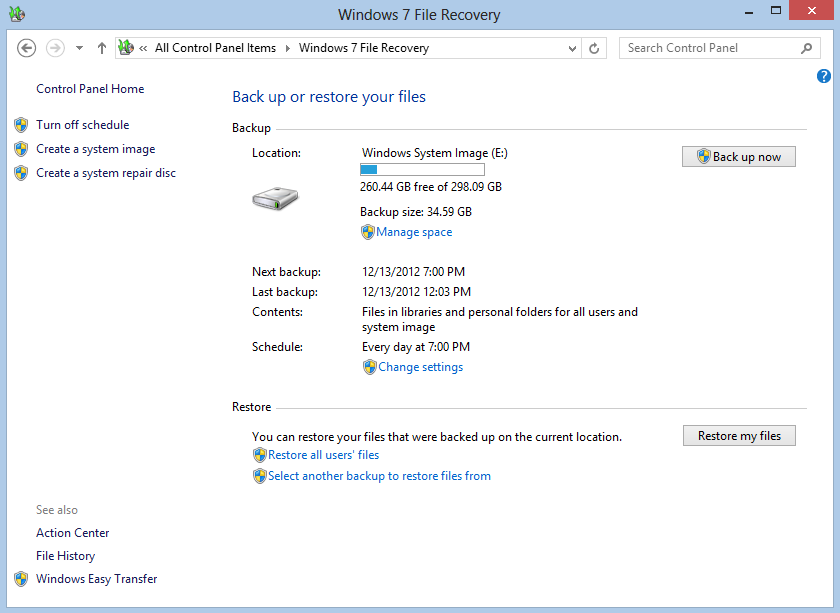

With a USB 2.0 drive, though, we will get much slower speeds, even if Windows is on an SSD drive. With the Windows on an SSD and a USB 3.0 thumb drive for the image, we can get speeds at about 180-190MB/s.
#Windows backup image full
The total time for the full Windows backup depends both on how much space Windows and all the installed programs are occupying, and how fast are both the Windows disk and the disk or USB thumb drive that will receive the image file. How long will it take for a full Windows backup? The default should be okay, but if we run into any trouble, we can select "Don't use VSS", and AOMEI Backupper will use its method. The Intelligent Sector tab allows us to backup only the used sectors of the file system, for faster backup creation with a smaller image file.įinally, the VSS is Microsoft's technique that allows us to create a full Windows backup while Windows is running. We can see the full options of the notifications system through the program's Settings -> Notifications -> Notification settings. The notification tab is more useful in corporate environments with unattended backups, so we can receive email messages in case of error or when specific tasks are finished. The splitting tab allows us to split the image file automatically into several smaller files, in case it isn't practical to keep it as one large file. The Encryption tab will password-protect our full Windows backup, and nobody can restore it without our permission. Normal or no compression is faster, but will give us a larger image file. High compression needs more CPU power, and would be slower. The Compression tab lets us decide how much we want the image file compressed. The backup optionsĪt the Comments tab, we can optionally write some information about this particular backup. It can be as simple or as detailed we want it to be. When the disk fails, we will lose all of its partitions. If our hard drive is split into two or more partitions, it doesn't make much sense to save the full Windows backup on a second partition on the same disk. The target path must be on a separate hard drive, either internal or external. When he isn't working on a computer or DIY project, he is most likely to be found camping, backpacking, or canoeing.We then give the backup a name, select the destination path, and check the Backup options. He has designed crossovers for homemade speakers all the way from the basic design to the PCB. He regularly repairs and repurposes old computers and hardware for whatever new project is at hand. He enjoys DIY projects, especially if they involve technology. He also uses Proxmox to self-host a variety of services, including a Jellyfin Media Server, an Airsonic music server, a handful of game servers, NextCloud, and two Windows virtual machines. He has been running video game servers from home for more than 10 years using Windows, Ubuntu, or Raspberry Pi OS. Nick's love of tinkering with computers extends beyond work. In college, Nick made extensive use of Fortran while pursuing a physics degree.

Before How-To Geek, he used Python and C++ as a freelance programmer. He has been using computers for 20 years - tinkering with everything from the UI to the Windows registry to device firmware. Nick Lewis is a staff writer for How-To Geek.


 0 kommentar(er)
0 kommentar(er)
